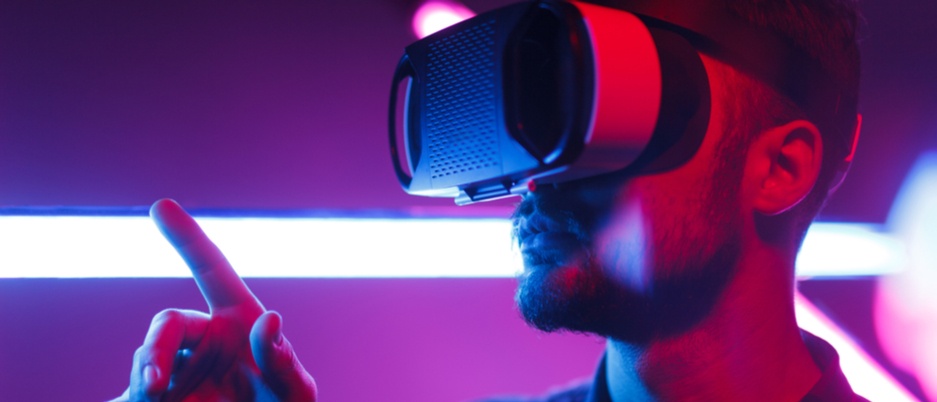
Offering an experience is an incredibly effective—and influential—way to present a new perspective on your product and brand. It’s a great way to allow potential followers or current customers experience your product or brand without buying in first. By creating an immersive experience, brands can present value in varying degrees.
Immersive technology in the form of interactive multimedia has been in development since the 1950s. While we hear about virtual reality (VR) and augmented reality (AR) interchangeably in modern marketing, they’re two different technologies that can achieve separate outcomes.
AR adds digital elements to a real-life experience (popularized by the hit game Pokémon Go), while VR is 100% immersive, using sensory technologies to give you the illusion of being in a separate reality (picture the goofy goggles).
AR has surpassed VR in popularity with brands, because it has the ability to slightly alter and improve an image or your environment by adding features using only a screen, camera, or mobile device. VR usually requires more equipment like a sensory headset or a completely immersive room or environment. AR is also more conducive to sharing via links or images on social media platforms, one of the premier goals of an effective experiential campaign.
Because younger generations seek the excitement of AR and VR, this type of tech can be a valuable addition to an experiential marketing campaign or event for the right brands. In fact, 90% of big companies today use it to capture their audience’s imagination.
The Real Marketing Benefits of AR and VR
The benefits to adding an immersive or sensory aspect to your campaign is extensive. Instead of telling someone about your brand or products, new tech allows you to show them instead. Virtual or augmented reality have a number of benefits, including:
- Personalization: Successful marketing experiences are inherently customer-centric. A technology like AR allows you to amplify this effect by making your participant the face of your product, digitally incorporating them as a character in a game or testing out goods and services. Sephora offers a virtual makeup artist experience that perfectly illustrates how personalization can win a customer and offer a brand experience at any time.
- See to Believe: Some benefits aren’t fully understood by customers until they see it in action. AR and VR makes this much easier, affordable (if not free), and accessible to anyone. Retailers like IKEA use this to their advantage by allowing you to see their products in your home space. An experience like this fosters trust and reinforces brand authenticity.
- Novel and Exciting: With custom and high-quality app development more readily available, many brands already have tech as a part of their promotional strategy. Custom capabilities allow each experience to be totally unique to the brand—there are no one-size-fits-all solutions here. Incorporating an element like this that hasn’t been seen before is in a perfect position to become a talking point, and guaranteed to generate buzz. Research shows that audiences respond to experiences that are surprising and cause an emotional response—AR and VR allow you to accomplish these by creating an intense sensory experience that your participants will remember.
Authentic In Reality
Adding a tech element to your promotional strategy helps create a lens that changes the way your audience sees or understands your brand or product. It can help them decide whether to purchase or engage by bringing the features and benefits of your product into their 3D world, without them having to buy or acquire a sample to test.
When developing any campaign, authenticity is key. A VR or AR element should help your ideal customer engage with your brand, service, or product in an authentic way. An effective experience should be meaningful and useful to them for it to be successful.
It can be an experience in itself, or it can be a feature that you add to an activation.
Ways to Augment Your Campaign
Help users by simplifying a task, enhancing an experience, or adding a surprising or emotional element to a campaign. Some examples of ways to incorporate AR or VR:
- Give a virtual tour that helps someone learn how to use or do something
- Showcase a product’s benefits or features in a standalone app
- Use immersive media outside of an experience to draw people in
- Create an immersive indoor experience that isolates the senses and makes an impression
If you’re looking for experiential marketing that can incorporate all the latest tech and media, consider a fully-customizable mobile campaign. Promobile Kitchen has created media-centric activations for big brands like MAC and AXE.
Are you next?
Get in touch and tell us about what you’d like to accomplish. We’ll develop campaign ideas and offer capabilities you didn’t think were possible.





